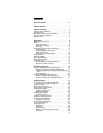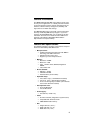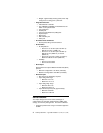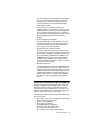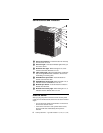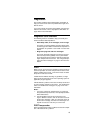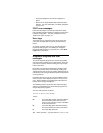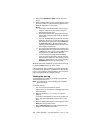
General information 5
The server supports up to two Pentium III microproces-
sors. The server comes with at least one processor
installed; you can install an additional processor to
enhance performance and provide SMP capability.
• Large system memory
The memory bus in the server supports up to
2gigabytes (GB) of system memory. The memory con-
troller provides error correcting code (ECC) support for
up to four industry standard PC133, 3.3 V, 168-pin, 8-
byte, registered, synchronous-dynamic-random access
memory (SDRAM) dual inline memory modules
(DIMMs).
• System-management capabilities
The Netfinity Manager software provided on the Serv-
erGuide CDs enables you to manage the functions of
the server locally and remotely. See “Netfinity Man-
ager” on page 75 for more information.
• Integrated network environment support
The server comes with an Ethernet controller on the
system board. This Ethernet controller has an interface
for connecting to 10-Mbps or 100-Mbps networks. The
server automatically selects between 10BASE-T and
100BASE-TX environments. The controller provides
full-duplex (FDX) capability, which enables simulta-
neous transmission and reception of data on the Ether-
net local area network (LAN).
• IBM ServerGuide CDs
The ServerGuide CDs included with IBM Netfinity serv-
ers provide programs to help you set up the server and
install the network operating system (NOS). The Serv-
erGuide program detects the hardware options that are
installed, and provides the correct configuration pro-
gram and device drivers. In addition, the ServerGuide
CDs include a variety of application programs for the
server.
Reliability, availability, and serviceability
Three of the most important features in server design are
reliability, availability, and serviceability (RAS). These fac-
tors help to ensure the integrity of the data stored on the
server; that the server is available when you want to use it;
and that should a failure occur, you can easily diagnose and
repair the failure with minimal inconvenience.
The following is an abbreviated list of the RAS features that
the server supports.
• Menu-driven setup, system configuration, RAID config-
uration, and diagnostic programs
• Power-on self-test (POST)
• Error codes and messages
• Upgradable BIOS and diagnostics
• Automatic restart after a power failure
• CRC checking on the SCSI buses
• Error checking and correcting (ECC) memory



